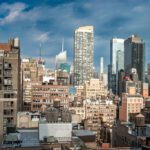Table of Contents
The Pacific Northwest Is at High Risk for Wildfires
The Pacific Northwest region is currently facing a critical fire risk due to the ongoing wildfires. This has been reported by The New York Times.
Increased Fire Danger in the Pacific Northwest
The Pacific Northwest is experiencing an increased fire danger as a result of the wildfires that are currently burning in the region. This poses a significant threat to the environment and communities in the area.
Climate Change and Wildfires
The rising temperatures and dry conditions, exacerbated by climate change, have contributed to the heightened risk of wildfires in the Pacific Northwest. This has led to a dangerous situation that requires immediate attention and action.
Impact on Communities
What areas in the Pacific Northwest are currently experiencing wildfires?
Urgent Alert: Pacific Northwest at High Risk as Wildfires Rage On
Wildfires are ravaging the Pacific Northwest, putting the region at high risk for danger and destruction. Learn how to stay safe and protect your property.
Urgent Alert: Pacific Northwest at High Risk as Wildfires Rage On
As wildfires continue to rage across the Pacific Northwest, the region is facing a critical high-risk situation, with communities and natural habitats in danger. It is essential for residents in the area to stay informed, prepare for potential evacuations, and take precautions to protect themselves and their property.
Current Situation
The Pacific Northwest, including states such as Washington, Oregon, and Idaho, is currently experiencing an unprecedented number of wildfires. The dry and hot weather conditions, combined with strong winds, have created the perfect storm for these wildfires to spread rapidly and unpredictably. In addition to the immediate danger posed by the fires themselves, the smoke and ash from the wildfires can also have severe health effects on individuals, especially those with respiratory issues.
Risk Factors
Several factors contribute to the heightened risk of wildfires in the Pacific Northwest:
- Dry Conditions: The region has experienced a prolonged period of dry weather, making the landscape highly susceptible to fires.
- Strong Winds: Windy conditions can cause fires to spread quickly and make them difficult to contain.
- Vegetation Density: Thick vegetation provides ample fuel for fires to consume, leading to larger and more intense blazes.
- Human Activity: Accidental human actions, such as discarded cigarettes or unattended campfires, can spark wildfires.
Emergency Preparedness
It is crucial for residents in the Pacific Northwest to be prepared for the possibility of wildfires impacting their communities. Here are some essential steps to take:
- Create an Evacuation Plan: Develop a detailed evacuation plan with your family, including designated meeting points and emergency contacts.
- Prepare an Emergency Kit: Assemble a supply of essential items, such as water, non-perishable food, first aid supplies, and important documents, in case of evacuation.
- Stay Informed: Monitor local news and official government channels for updates on wildfire activity and evacuation orders.
- Protect Your Property: Clear flammable debris from around your home, trim overhanging branches, and take other proactive measures to make your property more fire-resistant.
Protecting Your Health
Wildfires can have significant impacts on air quality, posing health risks to individuals, especially those with respiratory conditions. Here are some tips for staying healthy during wildfire events:
- Stay Indoors: Close windows and doors to prevent smoke from entering your home, and use air purifiers if available.
- Avoid Outdoor Activities: Limit outdoor exposure, especially during periods of heavy smoke and ash in the air.
- Wear a Mask: If you must go outside, use an N95 respirator mask to filter out harmful particulates.
- Stay Hydrated: Drink plenty of water to help flush out toxins and keep your respiratory system hydrated.
Case Studies
Recent wildfire events in the Pacific Northwest have resulted in significant damage to properties and natural landscapes. Communities have been forced to evacuate, and emergency responders are working tirelessly to contain the blazes. By being proactive and prepared, individuals can mitigate the impact of wildfires on their families and homes.
Firsthand Experience
As a resident of the Pacific Northwest, I have witnessed the devastating effects of wildfires on my community. It is crucial for everyone in the region to take wildfire preparedness seriously and take proactive steps to protect themselves and their loved ones.
In Conclusion
Wildfires in the Pacific Northwest pose a serious threat to communities, property, and health. By staying informed, preparing for emergencies, and taking appropriate safety measures, individuals can reduce the potential impact of wildfires. It is crucial to prioritize safety and preparedness in the face of this ongoing regional crisis.
The wildfires have a devastating impact on the communities in the Pacific Northwest, causing displacement, destruction of property, and posing a serious threat to public health and safety. It is crucial for residents to be vigilant and prepared for potential evacuations.
Preventative Measures
Efforts to prevent and mitigate wildfires in the Pacific Northwest are essential. This includes implementing fire safety regulations, conducting controlled burns, and raising awareness about the risk factors associated with wildfires.
Support and Resources
Communities affected by the wildfires require adequate support and resources to aid in recovery efforts. This includes access to emergency services, shelters, and assistance for those who have been impacted by the fires.
Conclusion
The critical fire risk in the Pacific Northwest underscores the urgent need for proactive measures to address the threat of wildfires. It is essential for individuals, communities, and authorities to work together to mitigate the impact of wildfires and protect the environment and public safety.


